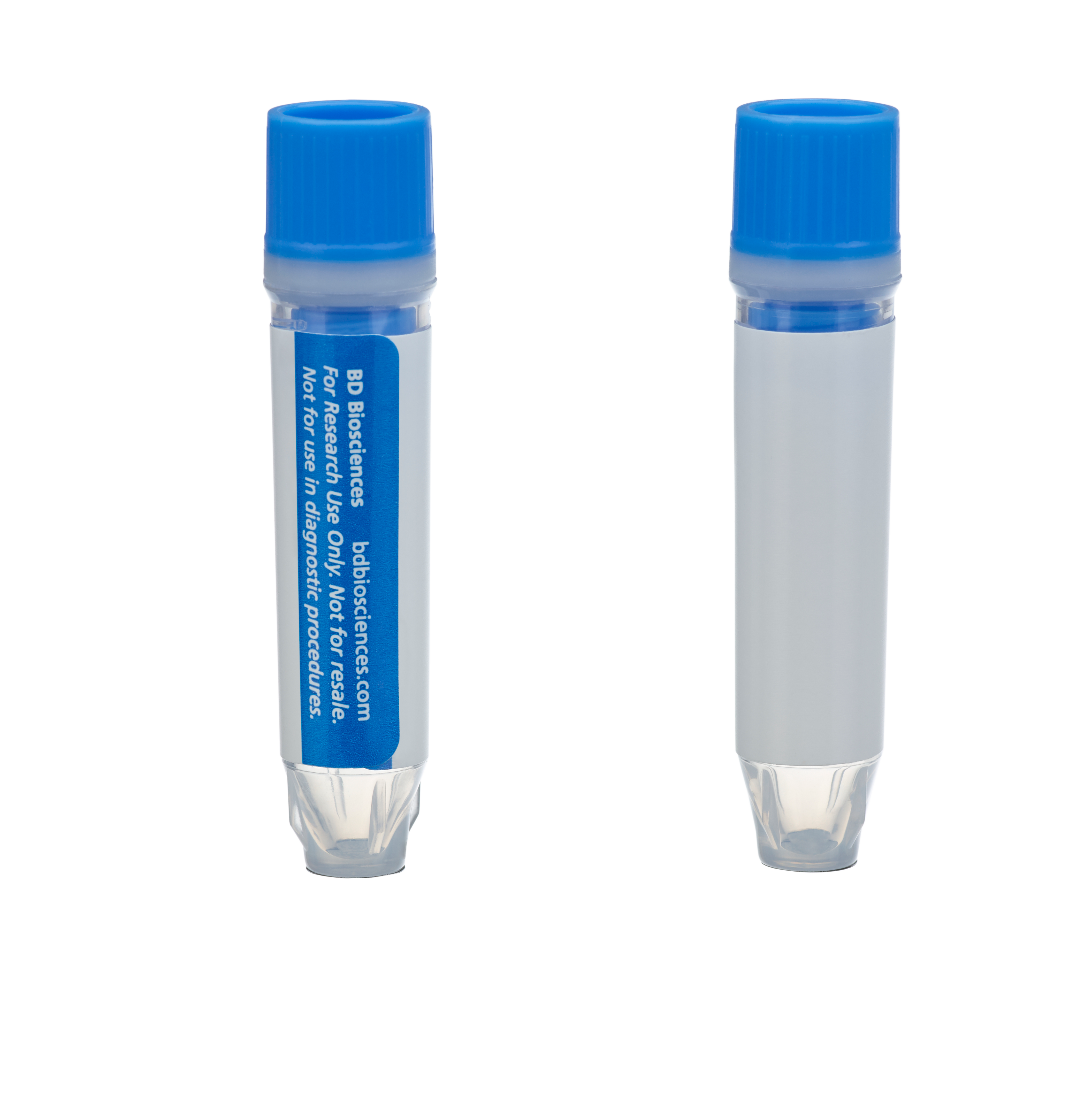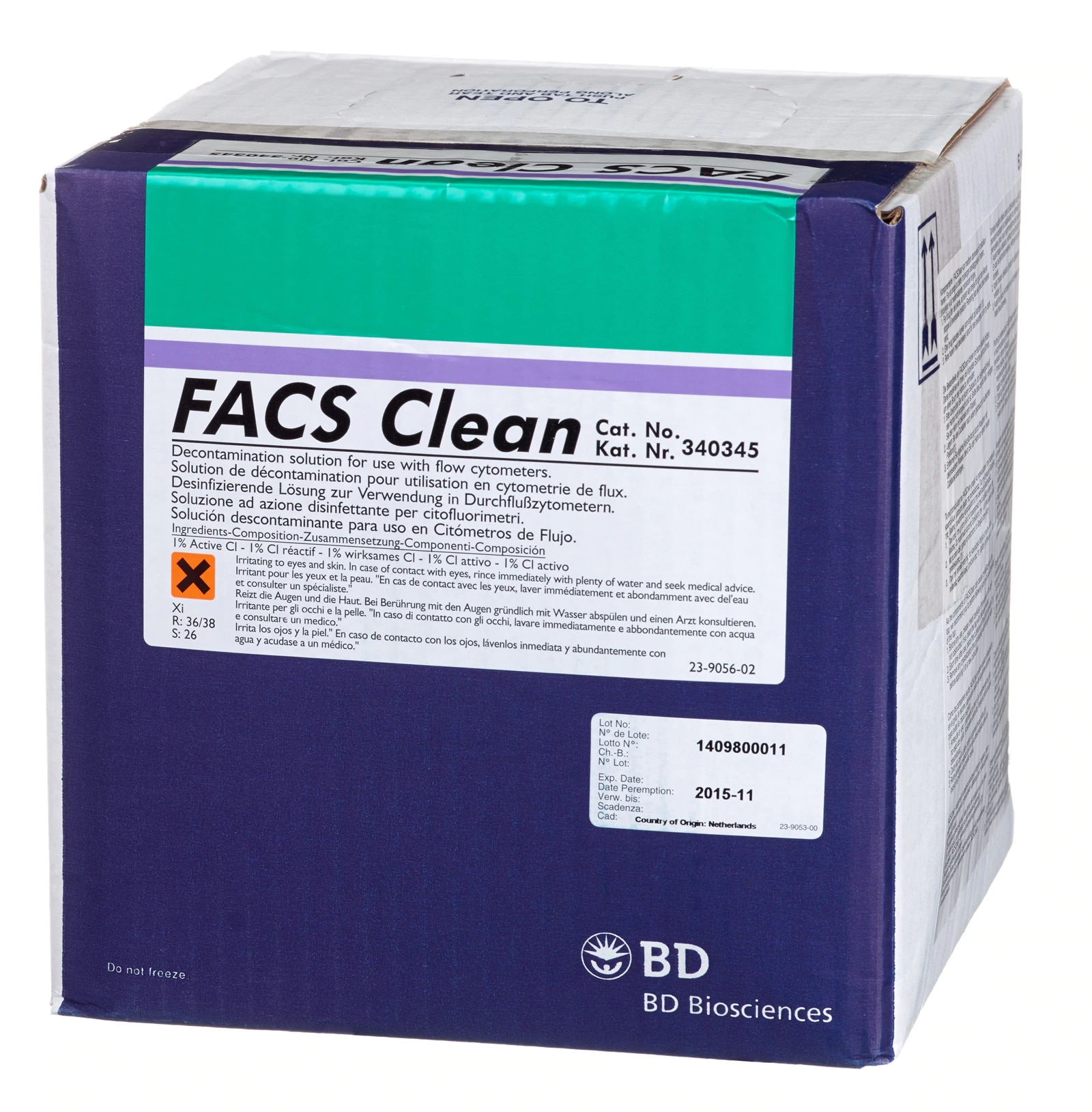-
Reagents
- Flow Cytometry Reagents
-
Western Blotting and Molecular Reagents
- Immunoassay Reagents
-
Single-Cell Multiomics Reagents
- BD® OMICS-Guard Sample Preservation Buffer
- BD® AbSeq Assay
- BD® Single-Cell Multiplexing Kit
- BD Rhapsody™ ATAC-Seq Assays
- BD Rhapsody™ Whole Transcriptome Analysis (WTA) Amplification Kit
- BD Rhapsody™ TCR/BCR Next Multiomic Assays
- BD Rhapsody™ Targeted mRNA Kits
- BD Rhapsody™ Accessory Kits
- BD® OMICS-One Protein Panels
-
Functional Assays
-
Microscopy and Imaging Reagents
-
Cell Preparation and Separation Reagents
-
- BD® OMICS-Guard Sample Preservation Buffer
- BD® AbSeq Assay
- BD® Single-Cell Multiplexing Kit
- BD Rhapsody™ ATAC-Seq Assays
- BD Rhapsody™ Whole Transcriptome Analysis (WTA) Amplification Kit
- BD Rhapsody™ TCR/BCR Next Multiomic Assays
- BD Rhapsody™ Targeted mRNA Kits
- BD Rhapsody™ Accessory Kits
- BD® OMICS-One Protein Panels
- United Kingdom (English)
-
Change country/language
Old Browser
This page has been recently translated and is available in French now.
Looks like you're visiting us from United States.
Would you like to stay on the current country site or be switched to your country?
BD Pharmingen™ Purified Mouse Anti-p27 [Kip1]
Clone G173-524 (RUO)

Immunoprecipitation/Western Blot analysis of p27 [Kip1]. Lanes 1 and 2, Equal amounts of protein (25 µg/lane) from BALB/c 3T3 cell lysates of quiescent (lane 1) and proliferating (lane 2) cells were seperated by SDS-PAGE and were probed with clone G173-524 (Cat. No. 554069). Cells may be made quiescent by techniques such as serum starvation. The antibody identifies p27 [Kip1] as a 27 kDa band and demonstrates that the level of p27 [Kip1] is higher during cell quiescence than during cell proliferation. Lane 3, lysate from quiescent BALB/c 3T3 cells was immunoprecipitated with clone G173-524. The immune complex was seperated by SDS-PAGE and p27 [Kip1] was detected by western blot analysis with clone G173-524.

Immunofluorescent staining of HeLa (ATCC CCL-2) cells. Cells were seeded in a 96 well imaging plate (Cat. No. 353219) at ~10,000 cells per well. After overnight incubation, cells were stained using the alcohol perm protocol and the anti-p27 [Kip1] antibody. The second step reagent was Alexa Fluor® 555 goat anti-mouse IgG (Invitrogen). The image was taken on a BD Pathway™ 855 Bioimager using a 20x objective. This antibody also stained A549 (ATCC CCL-185) cells and worked with both the Triton™ X-100 and alcohol perm protocols (see Recommended Assay Procedure).







Immunoprecipitation/Western Blot analysis of p27 [Kip1]. Lanes 1 and 2, Equal amounts of protein (25 µg/lane) from BALB/c 3T3 cell lysates of quiescent (lane 1) and proliferating (lane 2) cells were seperated by SDS-PAGE and were probed with clone G173-524 (Cat. No. 554069). Cells may be made quiescent by techniques such as serum starvation. The antibody identifies p27 [Kip1] as a 27 kDa band and demonstrates that the level of p27 [Kip1] is higher during cell quiescence than during cell proliferation. Lane 3, lysate from quiescent BALB/c 3T3 cells was immunoprecipitated with clone G173-524. The immune complex was seperated by SDS-PAGE and p27 [Kip1] was detected by western blot analysis with clone G173-524.
Immunofluorescent staining of HeLa (ATCC CCL-2) cells. Cells were seeded in a 96 well imaging plate (Cat. No. 353219) at ~10,000 cells per well. After overnight incubation, cells were stained using the alcohol perm protocol and the anti-p27 [Kip1] antibody. The second step reagent was Alexa Fluor® 555 goat anti-mouse IgG (Invitrogen). The image was taken on a BD Pathway™ 855 Bioimager using a 20x objective. This antibody also stained A549 (ATCC CCL-185) cells and worked with both the Triton™ X-100 and alcohol perm protocols (see Recommended Assay Procedure).

Immunoprecipitation/Western Blot analysis of p27 [Kip1]. Lanes 1 and 2, Equal amounts of protein (25 µg/lane) from BALB/c 3T3 cell lysates of quiescent (lane 1) and proliferating (lane 2) cells were seperated by SDS-PAGE and were probed with clone G173-524 (Cat. No. 554069). Cells may be made quiescent by techniques such as serum starvation. The antibody identifies p27 [Kip1] as a 27 kDa band and demonstrates that the level of p27 [Kip1] is higher during cell quiescence than during cell proliferation. Lane 3, lysate from quiescent BALB/c 3T3 cells was immunoprecipitated with clone G173-524. The immune complex was seperated by SDS-PAGE and p27 [Kip1] was detected by western blot analysis with clone G173-524.

Immunofluorescent staining of HeLa (ATCC CCL-2) cells. Cells were seeded in a 96 well imaging plate (Cat. No. 353219) at ~10,000 cells per well. After overnight incubation, cells were stained using the alcohol perm protocol and the anti-p27 [Kip1] antibody. The second step reagent was Alexa Fluor® 555 goat anti-mouse IgG (Invitrogen). The image was taken on a BD Pathway™ 855 Bioimager using a 20x objective. This antibody also stained A549 (ATCC CCL-185) cells and worked with both the Triton™ X-100 and alcohol perm protocols (see Recommended Assay Procedure).






ImageTitle~BD Pharmingen™ Purified Mouse Anti-p27 [Kip1]

ImageTitle~BD Pharmingen™ Purified Mouse Anti-p27 [Kip1]





Regulatory Status Legend
Any use of products other than the permitted use without the express written authorization of Becton, Dickinson and Company is strictly prohibited.
Preparation And Storage
Recommended Assay Procedures
Bioimaging
1. Seed the cells in appropriate culture medium at ~10,000 cells per well in a BD Falcon™ 96-well Imaging Plate (Cat. No. 353219) and culture overnight.
2. Remove the culture medium from the wells, and fix the cells by adding 100 μl of BD Cytofix™ Fixation Buffer (Cat. No. 554655) to each well. Incubate for 10 minutes at room temperature (RT).
3. Remove the fixative from the wells, and permeabilize the cells using either BD Perm Buffer III, 90% methanol, or Triton™ X-100:
a. Add 100 μl of -20°C 90% methanol or Perm Buffer III (Cat. No. 558050) to each well and incubate for 5 minutes at RT.
OR
b. Add 100 μl of 0.1% Triton™ X-100 to each well and incubate for 5 minutes at RT.
4. Remove the permeabilization buffer, and wash the wells twice with 100 μl of 1× PBS.
5. Remove the PBS, and block the cells by adding 100 μl of BD Pharmingen™ Stain Buffer (FBS) (Cat. No. 554656) to each well. Incubate for 30 minutes at RT.
6. Remove the blocking buffer and add 50 μl of the optimally titrated primary antibody (diluted in Stain Buffer) to each well, and incubate for 1 hour at RT.
7. Remove the primary antibody, and wash the wells three times with 100 μl of 1× PBS.
8. Remove the PBS, and add the second step reagent at its optimally titrated concentration in 50 μl to each well, and incubate in the dark for 1 hour at RT.
9. Remove the second step reagent, and wash the wells three times with 100 μl of 1× PBS.
10. Remove the PBS, and counter-stain the nuclei by adding 200 μl per well of 2 μg/ml Hoechst 33342 (e.g., Sigma-Aldrich Cat. No. B2261) in 1× PBS to each well at least 15 minutes before imaging.
11. View and analyze the cells on an appropriate imaging instrument.
Bioimaging: For more detailed information please refer to http://www.bdbiosciences.com/support/resources/protocols/ceritifed_reagents.jsp
Western blot: For more detailed information please refer to http://www.bdbiosciences.com/pharmingen/protocols/Western_Blotting.shtml
Product Notices
- Since applications vary, each investigator should titrate the reagent to obtain optimal results.
- Please refer to www.bdbiosciences.com/us/s/resources for technical protocols.
- Caution: Sodium azide yields highly toxic hydrazoic acid under acidic conditions. Dilute azide compounds in running water before discarding to avoid accumulation of potentially explosive deposits in plumbing.
- This antibody has been developed and certified for the bioimaging application. However, a routine bioimaging test is not performed on every lot. Researchers are encouraged to titrate the reagent for optimal performance.
- Triton is a trademark of the Dow Chemical Company.
Data Sheets
Companion Products





Cyclins and cyclin-dependent kinases (cdks) are evolutionarily conserved proteins that are essential for cell-cycle control in eukaryotes. Cyclins (regulatory subunits) bind to cdks (catalytic subunits) to form complexes that regulate the progression of the cell cycle. These complexes are regulated by activating and inhibitory phosphorylation events, as well as by interactions with small proteins that bind to cyclins, cdks, or cyclin-cdk complexes. These include p15, p16, p18, p19, p21 and p27 [Kip1]. p27 [Kip1] has been shown to inhibit the activity of multiple cyclin-cdk complexes, including cyclin D-cdk4, cyclin E-cdk2 and cyclin A-cdk2. p27 [Kip1] is a 27 kD protein which shares N-terminal sequence homology with p21, and like p21, p27 [Kip1] contains a nuclear localization signal in its C-terminal region. IL-2 activation of T cells has been reported to lead to a decrease in p27 [Kip1] and entry into S phase. Removal of IL-2 from T cell cultures results in increased levels of p27 [Kip1] and cell quiescence.
Development References (6)
-
Gorospe M, Liu Y, Xu Q, Chrest FJ, Holbrook NJ. Inhibition of G1 cyclin-dependent kinase activity during growth arrest of human breast carcinoma cells by prostaglandin A2. Mol Cell Biol. 1996; 16(3):762-770. (Biology).
-
Nourse J, Firpo E, Flanagan WM, et al. Interleukin-2-mediated elimination of the p27Kip1 cyclin-dependent kinase inhibitor prevented by rapamycin. Nature. 1994; 372(6506):570-573. (Biology). View Reference
-
Polyak K, Kato JY, Solomon MJ, et al. p27Kip1, a cyclin-Cdk inhibitor, links transforming growth factor-beta and contact inhibition to cell cycle arrest. Genes Dev. 1994; 8(1):9-22. (Biology). View Reference
-
Polyak K, Lee MH, Erdjument-Bromage H, et al. Cloning of p27Kip1, a cyclin-dependent kinase inhibitor and a potential mediator of extracellular antimitogenic signals. Cell. 1994; 78(1):59-66. (Biology). View Reference
-
Sherr CJ. Mammalian G1 cyclins. Cell. 1993; 73(6):1059-1065. (Biology). View Reference
-
Toyoshima H, Hunter T. p27, a novel inhibitor of G1 cyclin-Cdk protein kinase activity, is related to p21. Cell. 1994; 78(1):67-74. (Biology). View Reference
Please refer to Support Documents for Quality Certificates
Global - Refer to manufacturer's instructions for use and related User Manuals and Technical data sheets before using this products as described
Comparisons, where applicable, are made against older BD Technology, manual methods or are general performance claims. Comparisons are not made against non-BD technologies, unless otherwise noted.
For Research Use Only. Not for use in diagnostic or therapeutic procedures.